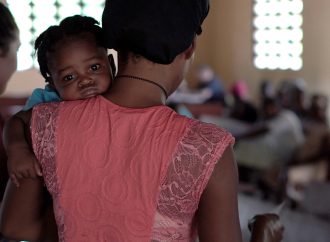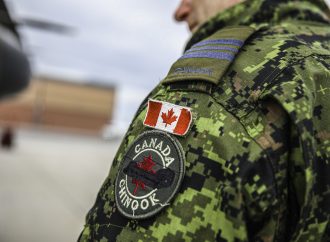For years, mounting instability had many predicting the collapse of Yemen. These forecasts became reality in 2014 when years of accumulated tension pushed the country into civil war. On one side is an alliance of the Houthis, a northern movement that has been fighting the government since 2004, and troops and militias loyal to former president
For years, mounting instability had many predicting the collapse of Yemen. These forecasts became reality in 2014 when years of accumulated tension pushed the country into civil war. On one side is an alliance of the Houthis, a northern movement that has been fighting the government since 2004, and troops and militias loyal to former president Ali Abdullah Saleh. On the other side are supporters of the government of President Abed Rabbo Mansour Hadi, who was overthrown by the Houthis in early 2015.
The war intensified in March 2015 when a coalition of 10 states led by Saudi Arabia launched a campaign of airstrikes against the Houthi-Saleh coalition. Riyadh’s declared objectives are to roll back the Houthis and reinstate Hadi. Saudi Arabia claims that the Houthis are an Iranian proxy, leading it to frame the war as an effort to counter Iran’s influence. The Saudis are not the only ones to label the Houthis puppets of Iran. Politicians and media in the West, in particular, also frequently describe them as Iranian proxies.
Yet as I argue in a recent article in the May 2016 issue of International Affairs, the Chatham House journal, Tehran’s support for the Houthis is limited, and its influence in Yemen is marginal. It is simply inaccurate to claim that the Houthis are Iranian proxies.
Instead, the war in Yemen is driven by local grievances and competition for power among Yemeni actors. The Houthis and Saleh want to overturn the political order that emerged after the uprisings of 2011: Saleh wants to return to power, having lost the presidency in the wake of popular protests, while the Houthis want a greater say in national affairs. In other words, the Houthis want in, Saleh wants back in, and the Hadi bloc wants to keep them both out.
Iran’s limited support for the Houthis
According to a 2015 report to the U.N. Security Council Iran Sanctions Committee, Iran probably started providing small amounts of weapons to the Houthis in 2009 — five years after the first round of fighting between the Houthis and government forces. In 2011, U.S. officials — who until then had been dismissive of such accusations — started to acknowledge that Iran was likely responsible for the delivery of automatic rifles, grenade launchers, and cash, probably in the millions of dollars.
The Houthi’s takeover of Sanaa, Yemen’s capital, in September 2014 prompted Iran to increase its support. It now appears that small numbers — perhaps dozens — of Islamic Revolutionary Guard Corps (IRGC) officers, with assistance from Lebanese Hezbollah, have set up a train-and-equip program for the Houthis. There have also been reports of intensifying shipping activity between Iran and Yemen.
This assistance, however, remains limited and far from sufficient to make more than a marginal difference to the balance of forces in Yemen, a country awash in weapons. There is therefore no supporting evidence to the claim that Iran has bought itself any significant measure of influence over Houthi decision-making.
Common interests, not common faith
What’s in it for Tehran? Iran supports groups throughout the Middle East when two conditions are met. The Islamic Republic, first, takes advantage of instability to penetrate weak polities. Second, it targets dissatisfied political parties or militias who oppose, violently or non-violently, the domestic or regional status quo. In doing so, Iran wants to gain access to an area that it can later use as a launching pad to pressure its regional rivals, especially Saudi Arabia and Israel, and to oppose the regional U.S. presence. It also seeks to boost its deterrence, by arming its partners so that they could retaliate against U.S. interests or partners in the event of a war. More broadly, Iran uses these ties to build influence in weak polities, aiming to position itself as an indispensable regional power.
What brings Iran and the Houthis together is not a common Shiite faith, as is often implied in Western media, where one regularly reads references to the Houthis as “Shia.” This is not technically inaccurate: The Houthis are Zaydis, a small branch of Shiism distinct from the Twelver Shiism practiced by a majority of the region’s Shiites. It is misleading, however: Their beliefs diverge significantly, and many Zaydis in Yemen are opposed to the Houthis.
Rather, a common dissatisfaction with the status quo drives their partnership. Iran opposes the regional order, dominated by the United States and its partners, especially Saudi Arabia and Israel. At the same time, the Houthis oppose the Hadi government, itself backed by Saudi Arabia. Many of the Houthis’ domestic rivals in Yemen, such as the Islah party, moreover, back the Hadi government and are supported by Riyadh. There is, in sum, a convergence of interests among the Houthis, Iran, and former president Saleh, on one side, and the pro-status quo forces of the remnants of the Hadi government, its domestic backers, and Saudi Arabia, on the other.
Limited returns on a modest investment
In this context, Tehran has come to recognize that a minor investment in Yemen can yield limited but interesting returns. Instability in Yemen, first, has opened a tempting door for Iran to build a small presence on Saudi Arabia’s southern border. More importantly, the growing dissatisfaction of the Houthis and their rising power has led Iran to view them as an attractive partner. At the same time, Iran’s increasingly difficult relations with Hamas (which has sided with the opposition in Syria’s civil war) and uncertainty surrounding the future of its most valuable alliances (with the Assad regime and Hezbollah, because of the Syrian civil war) may have pushed Tehran to develop new partnerships.
Iran’s investment in Yemen has been limited; it has therefore brought only limited influence. Tehran does not have the ability to shape events in Yemen; contrary to the claims of an obscure Iranian parliamentarian whose hubris has been frequently repeated, Iran does not control a fourth Arab capital in Sana’a. If anything, Iran has bandwagoned onto Houthi successes: It did not cause them but wants to see them consolidated.
The irony, of course, is that one of Saudi Arabia’s stated objectives for intervening in Yemen in March 2015 was to roll back a mostly fictitious Iranian influence. The intervention, however, is having the opposite effect: The Houthis are a small non-state actor attacked by a regional power with deep pockets and advanced weaponry. It is then only rational for the Houthis to seek assistance, albeit only small amounts, from the only external power willing and able to support them — Iran.
This article was first published on 16 May 2016 in The Washington Post.










